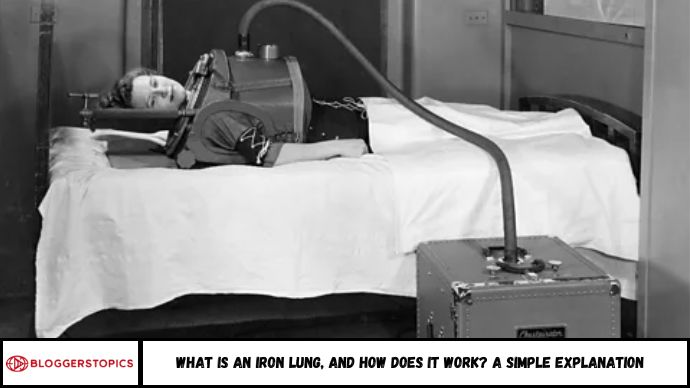An iron lung is a historic medical device designed to assist breathing in patients with respiratory failure, especially from polio. This article explains how the iron lung works, why it was vital during the mid-20th century, and its role in modern medicine. Learn the basic science behind this life-saving invention, how it differs from other ventilators, and why it remains a symbol of respiratory care history.
In both medical and engineering fields, this device goes by several names—cabinet respirator, tank respirator, negative pressure ventilator, among others.
Yet for nearly a century, it has been most famously—and simply—known as the iron lung.
What Is an Iron Lung?
Imagine being unable to breathe on your own. Before modern ventilators, many patients with paralysis from diseases like poliomyelitis depended on an invention called the iron lung to survive.
The iron lung is a large, airtight metal cylinder that helps patients breathe when their respiratory muscles are too weak or paralyzed. It works by creating a vacuum that causes the chest to expand and contract, mimicking natural breathing.
How Does the Iron Lung Work?
1. Negative Pressure Ventilation
The iron lung uses negative pressure ventilation to stimulate breathing. Here’s how:
- The patient lies inside the airtight chamber, with only their head outside.
- The machine cycles between lowering and increasing air pressure inside the chamber.
- When pressure drops (creating a vacuum), the chest expands, drawing air into the lungs.
- When pressure increases back to normal, the chest compresses, pushing air out.
This method contrasts with modern ventilators, which use positive pressure to push air directly into the lungs.
Historical Significance of the Iron Lung
Polio Epidemic and Respiratory Paralysis
During the 1940s and 1950s, polio outbreaks caused thousands of cases of paralysis and respiratory failure. The iron lung became a crucial life-saving tool for many patients.
- At its peak, over 1,000 iron lungs were in use in the U.S. alone.
- Patients sometimes spent weeks, months, or even years inside the device.
Medical Milestone
The iron lung represented a major breakthrough in respiratory care, allowing patients with paralyzed diaphragms to survive and recover.
Iron Lung vs. Modern Ventilators
Key Differences
- Iron lung: External, uses negative pressure to expand the chest.
- Modern ventilators: Use positive pressure, pushing air through tubes inserted into the airway.
Modern machines are smaller, more portable, and more effective for many patients. Yet, the iron lung remains important in medical history.
Why Is the Iron Lung Still Relevant?
Though rare today, a few patients still use iron lungs, especially those with long-term paralysis. Additionally, the iron lung is a valuable teaching tool, highlighting the evolution of respiratory support.
FAQs
1. What exactly does an iron lung do?
It helps patients breathe by mechanically expanding and contracting the chest using negative pressure.
2. Is the iron lung still used today?
Very rarely. Modern ventilators have mostly replaced it, but some patients with chronic paralysis still use iron lungs.
3. Why was the iron lung important during polio outbreaks?
It saved many lives when polio caused paralysis of respiratory muscles, which made breathing impossible without assistance.
4. How is an iron lung different from a ventilator?
Iron lungs use negative pressure around the chest, while ventilators use positive pressure to push air directly into the lungs.
5. Can anyone use an iron lung at home?
Due to its size and complexity, iron lungs are typically only used under medical supervision in specialized facilities or at home with professional care.
Conclusion
The iron lung stands as a powerful symbol of medical innovation in respiratory support. By understanding how it works and its historical context, we appreciate the advances that have led to modern ventilators saving millions today. Though largely replaced, the iron lung’s impact on patient care remains significant.







